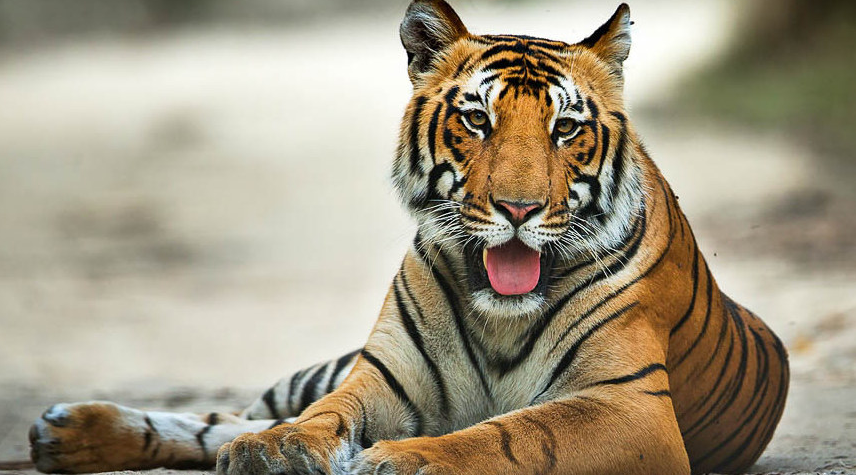
Jim Corbett National Park, established in 1936, holds the distinction of being India's first national park and one of the most prestigious wildlife sanctuaries in the world. Located in the Nainital district of Uttarakhand, this magnificent park spans over 520 square kilometers and is part of the larger Corbett Tiger Reserve.
Named after the legendary hunter-turned-conservationist Jim Corbett, who played a pivotal role in establishing the park, this sanctuary was originally called Hailey National Park. Jim Corbett, known for hunting man-eating tigers and leopards, later became a passionate advocate for wildlife conservation. The park was renamed in his honor in 1957.
The park is situated in the foothills of the Himalayas, featuring diverse topography including hills, riverine belts, marshy depressions, grasslands, and dense forests. The Ramganga River flows through the park, providing a lifeline for the wildlife and creating spectacular landscapes. The terrain varies from 1,300 feet to 4,000 feet above sea level.
Jim Corbett National Park is renowned for its rich biodiversity and is home to over 600 species of birds, 50 species of mammals, 25 species of reptiles, and numerous species of fish and insects.
Bengal Tigers: The park is famous for its healthy population of Bengal tigers, with over 200 tigers roaming freely in their natural habitat. It was the first location where Project Tiger was launched in 1973.
Asian Elephants: Large herds of wild elephants, numbering over 600, are frequently spotted throughout the park, particularly in the grasslands and near water sources.
Leopards: The park hosts a significant population of leopards, though they are more elusive and often spotted during early morning or late evening safaris.
Other Mammals: Spotted deer (chital), sambar deer, barking deer, wild boar, Indian pangolin, Himalayan black bear, sloth bear, jackal, yellow-throated marten, and various species of cats including jungle cat and fishing cat.
Reptiles: King cobra, Indian python, monitor lizard, gharial, and mugger crocodile inhabit the park's diverse ecosystems.
Avian Life: Over 600 bird species including crested serpent eagle, blossom-headed parakeet, red junglefowl, great hornbill, pallas's fish eagle, white-rumped vulture, and numerous species of kingfishers, woodpeckers, and flycatchers.
The park is divided into several zones, each offering unique wildlife experiences:
The core area of the park, famous for its vast grasslands and the highest tiger density. Home to Dhikala Forest Lodge, offering overnight stays inside the park.
Known for its dense forests and excellent tiger sightings. Popular among day visitors and easily accessible from Ramnagar.
Open throughout the year, this zone offers good wildlife viewing opportunities and is known for its leopard population.
Buffer zones including Sonanadi, Kalagarh, and other areas that provide additional wildlife viewing opportunities.
The park is open from November to June, with different seasons offering unique experiences:
Pleasant weather with temperatures ranging from 5°C to 25°C. Excellent for bird watching and comfortable safari experiences.
Hot and dry conditions with temperatures up to 40°C. Best for tiger sightings as animals gather around water sources. Vegetation is sparse, making wildlife spotting easier.
As India's first national park and the birthplace of Project Tiger, Jim Corbett has been at the forefront of wildlife conservation. The park has successfully increased its tiger population through various conservation initiatives, anti-poaching measures, and habitat management programs.
The park offers multiple safari options to suit different preferences and budgets:
The most popular option, offering flexibility and better wildlife viewing opportunities. Available in both morning and evening slots.
A unique experience allowing visitors to explore the park on elephant back, though availability is limited.
Larger vehicle accommodating up to 20 people, ideal for budget-conscious travelers and groups.
The park offers various accommodation options both inside and outside the park boundaries:
Government-run accommodations inside the park including Dhikala Forest Lodge, Bijrani Forest Rest House, and others.
Numerous luxury and budget resorts located in the buffer zones, offering comfortable stays with modern amenities.
To ensure wildlife protection and visitor safety, the park has established several guidelines:
• Advance booking is mandatory for all safaris
• Maintain silence during safaris to avoid disturbing wildlife
• Do not feed or approach wild animals
• Follow designated routes and timings
• Carry valid identification documents
• Photography restrictions apply in certain areas
• Littering and smoking are strictly prohibited
The region around Jim Corbett National Park offers several additional attractions:
Garjiya Devi Temple: A revered temple located on the banks of Kosi River, popular among pilgrims and tourists.
Corbett Museum: Located in Kaladhungi, this museum showcases the life and work of Jim Corbett.
Corbett Waterfall: A scenic waterfall located near Kaladhungi, perfect for nature lovers.
Sitabani Forest Reserve: A buffer zone of the park, known for its bird life and temple.
Jim Corbett National Park is easily accessible by road, rail, and air:
By Road: Well-connected by motorable roads from Delhi (245 km), Dehradun (150 km), and other major cities.
By Rail: Ramnagar Railway Station is the nearest railhead, just 12 km from the park entrance.
By Air: Pantnagar Airport (50 km) is the nearest airport, while Indira Gandhi International Airport, Delhi (245 km) offers better connectivity.
Jim Corbett National Park stands as a testament to India's commitment to wildlife conservation and offers visitors an unparalleled opportunity to witness the country's magnificent biodiversity. Whether you're a wildlife enthusiast, photographer, or nature lover, the park promises an unforgettable experience that connects you with India's natural heritage.